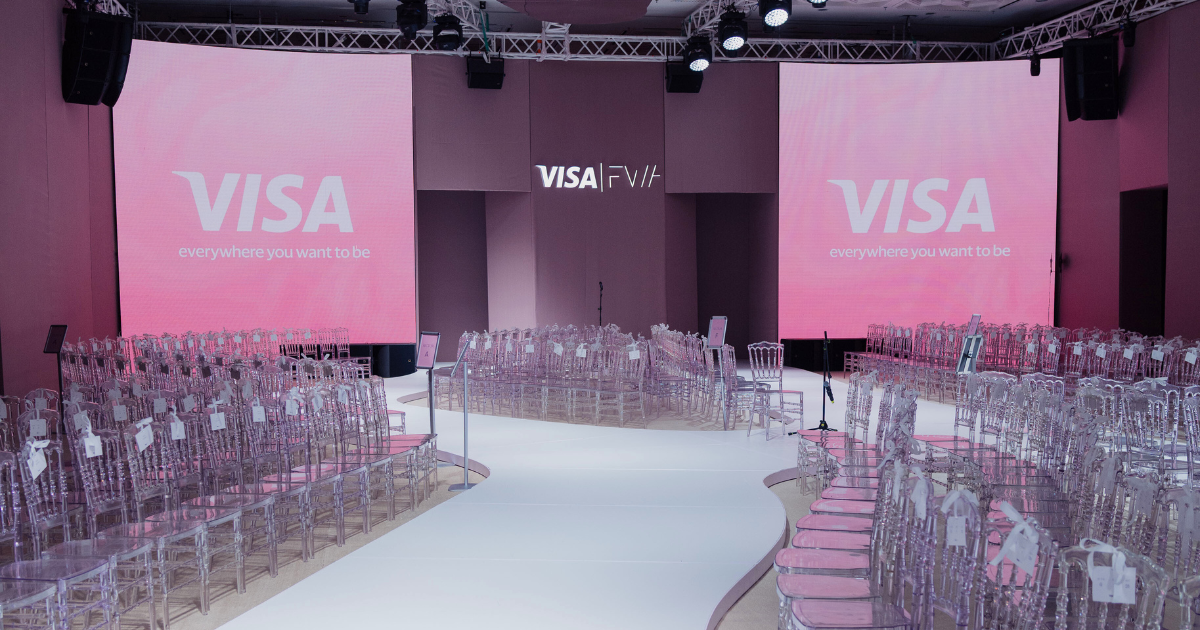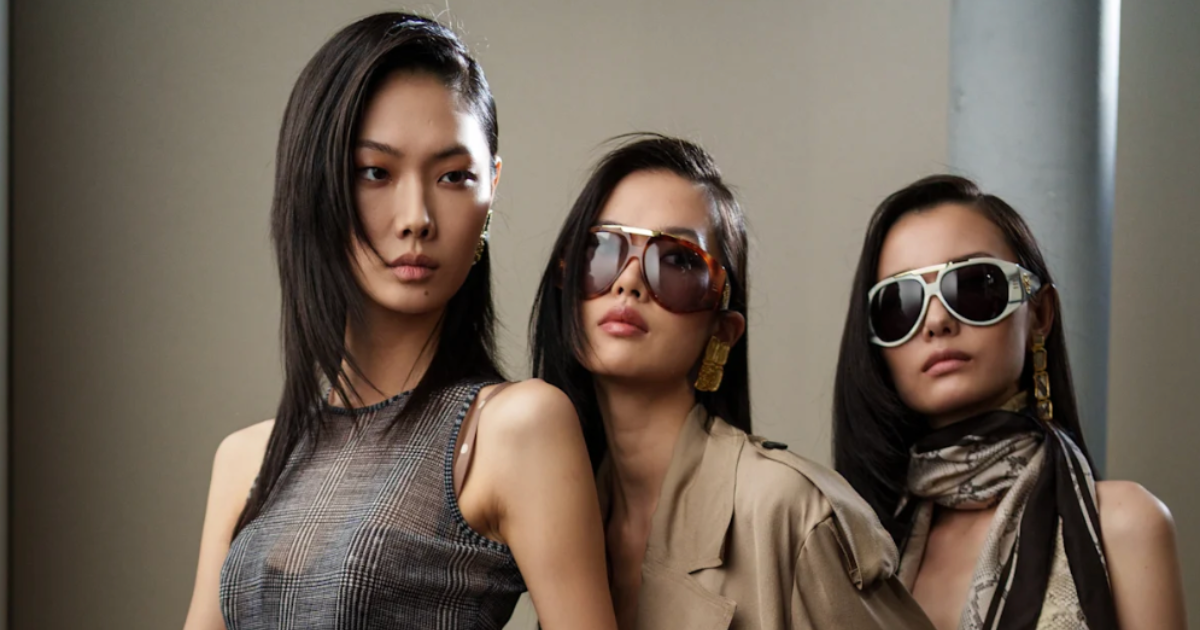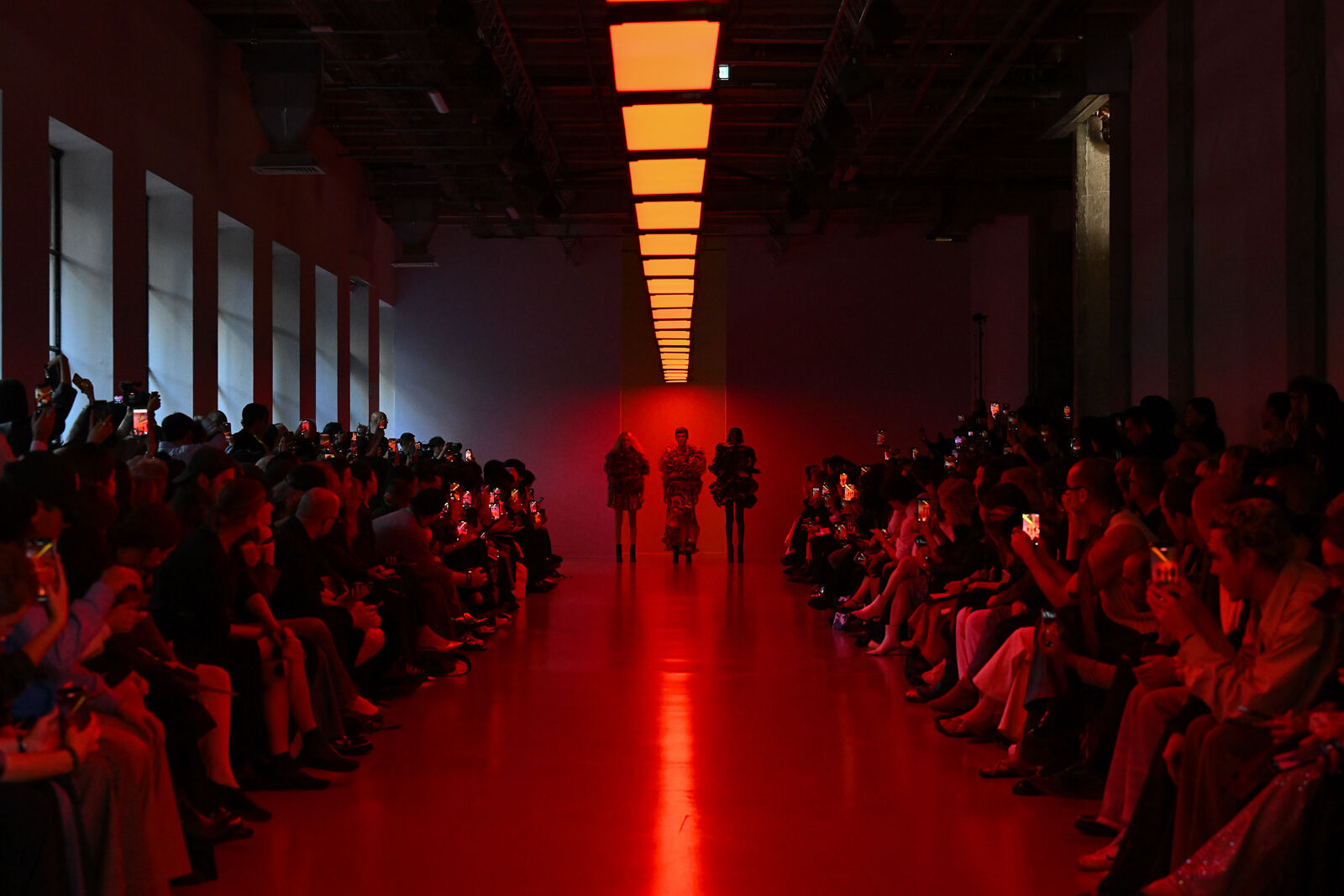Officer Jackets, 3D Collages, and the Metaphor of Dance: New Days of Paris Fashion Week
Between theatre, philosophy, and dance
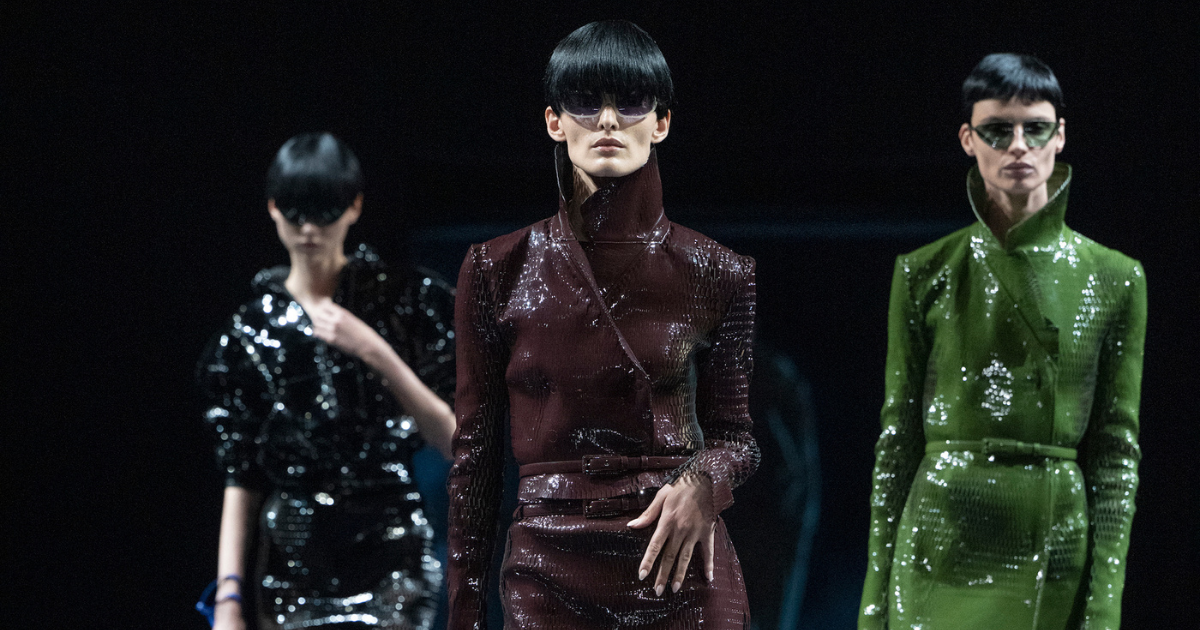
The latest days of Paris Fashion Week once again confirmed its status as one of the industry’s defining events. The fashion world reveled in a wave of fresh shows — satisfied not only by the quality of the collections (such as Haider Ackermann’s for Tom Ford), but also by the originality of their presentation. Enfants Riches Déprimés placed a glass coffin with a model inside one of the rooms — a haunting, provocative gesture that became the talk of the town. Yet the week’s most unforgettable moment belonged to the lavish party at YoYo Club in the Palais de Tokyo, where the Karl Lagerfeld brand celebrated its new campaign featuring Paris Hilton — the ultimate embodiment of glamour and pop culture. The event drew A-list guests and the Parisian elite, who immersed themselves in a night of exuberance, shine, and unrestrained joy.
Below — the standout Spring–Summer 2026 collections from the third and fourth days of Paris Fashion Week:
Icicle
Under the creative direction of Bénédicte Laloux, Icicle presented a harmonious fusion of sustainability and refined minimalism. For the premium Icicle Atelier line, the designer played boldly with color — vivid accents blending seamlessly with summery neutrals, stripes, and soft floral prints to evoke freshness and movement. The fabrics were natural and eco-conscious: lightweight, water-repellent blends of silk and wool, cotton poplin, linen, and silk crepe. Relaxed jackets and airy duster coats ensured freedom of motion, while structured tunics and midi skirts in dense knits balanced elegance and comfort. Diffused silk gauze added lightness, as if garments were caught by the wind. Special attention was paid to rectangular pattern cuts designed to minimize waste while forming gentle pleats, folds, and belts that brought softness and sculptural flow to the silhouettes.
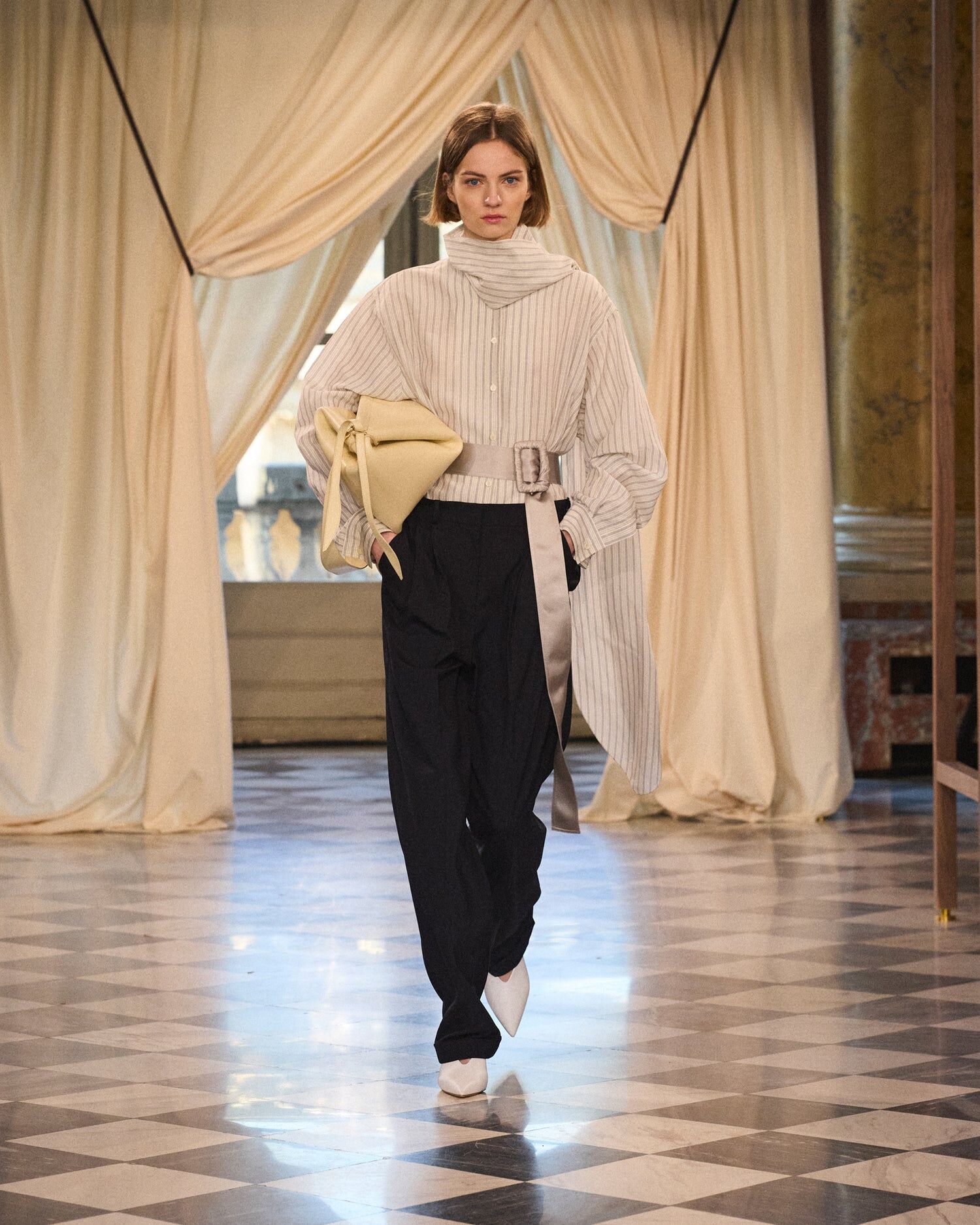
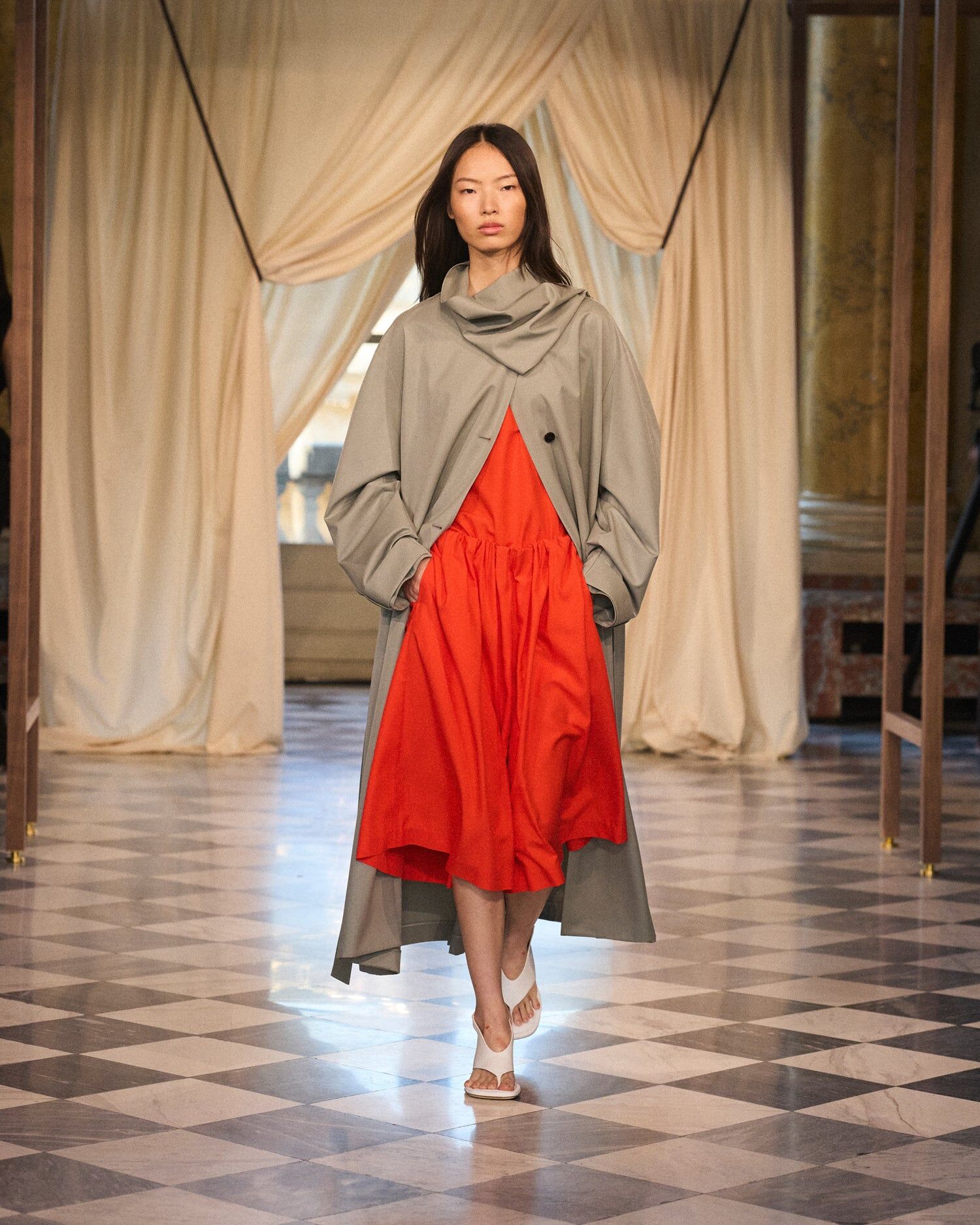
Marie Adam-Leenaerdt
With this show, the young Belgian designer opened a new chapter in her career. Her clothing has become a signature of contemporary Paris — combining practicality with understated sophistication. The runway was transformed into a labyrinth inspired by airport queues, where each woman embodied her own rhythm and individuality. Silhouettes intersected, glances met, and outfits entered into dialogue, creating a quiet choreography of movement. Traditional wardrobe staples — coats, suits, dresses — were reinterpreted with modern boldness and unexpected details. Trench coats became modular, adaptable to one’s mood. Eveningwear leaned toward coquettish rather than glamorous, while classic shirts and trousers were given a radical contemporary edge. Every piece seemed made for a woman in motion — traveling, exploring, and open to new experiences. Marie skillfully merged structure with femininity, evoking independence and grace. The color palette — black, navy, beige, and nude — formed a universal canvas for daring accents.
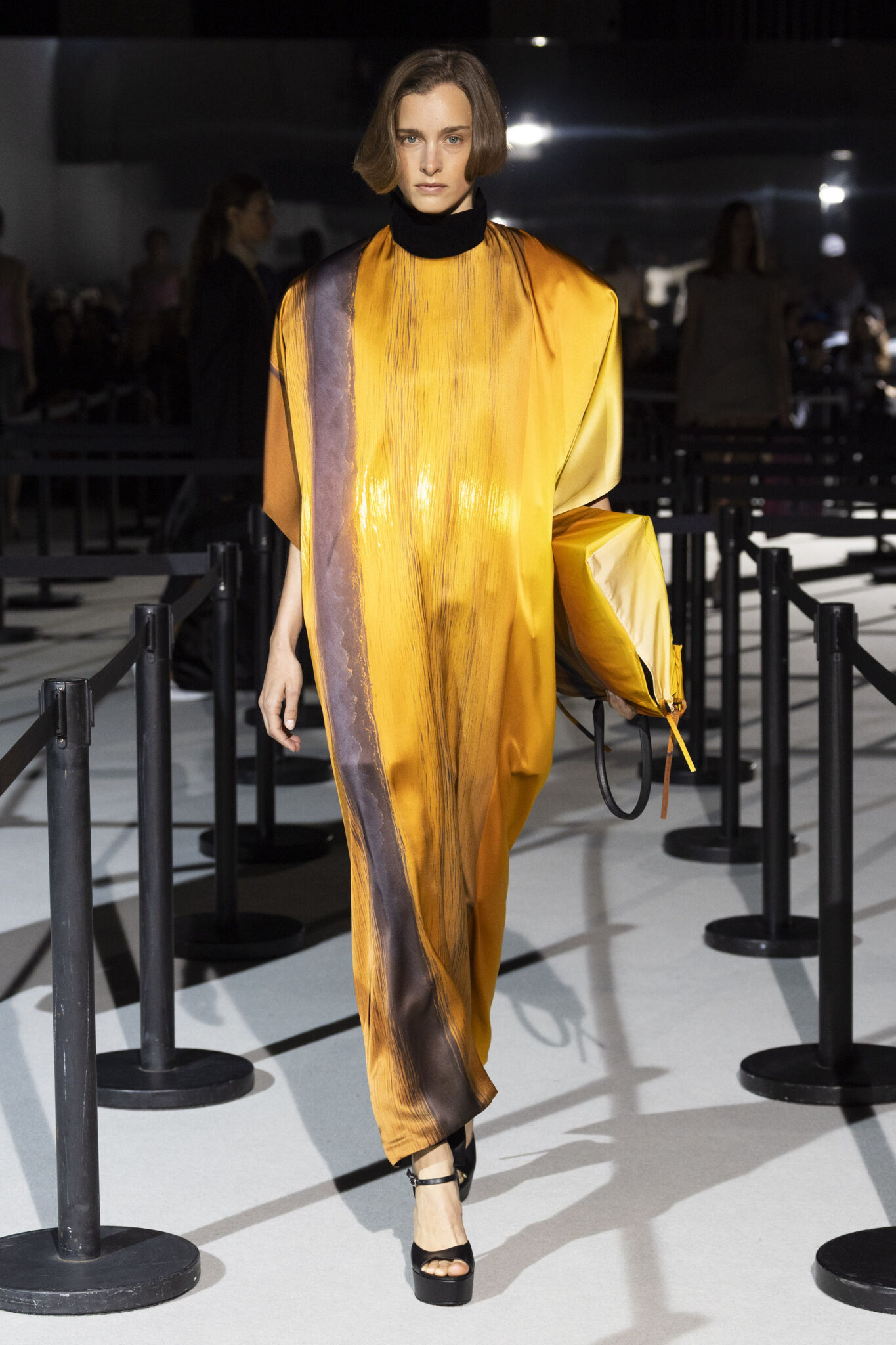
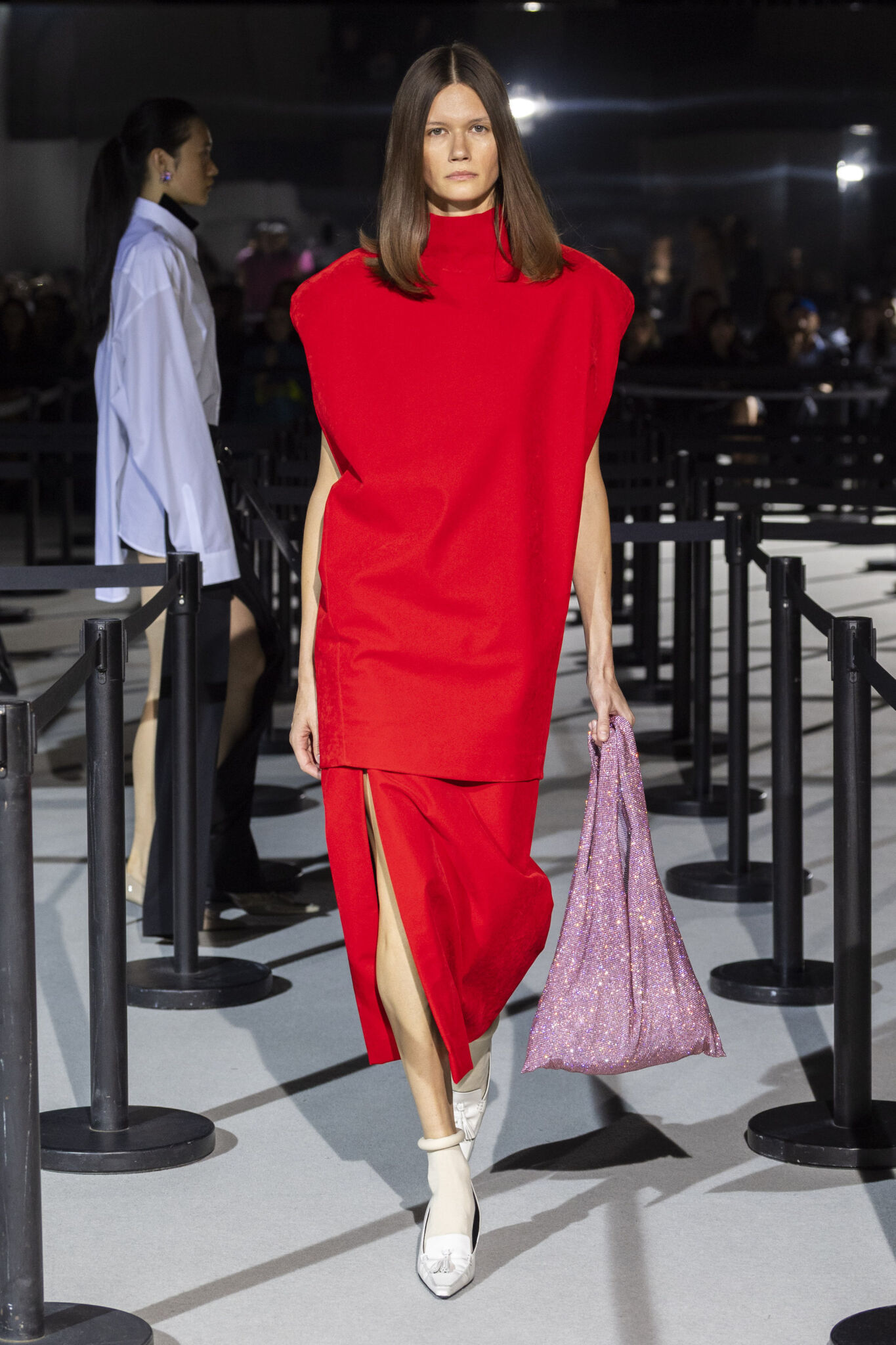
Torishéju
Paris witnessed a profound study of human consciousness overloaded by information and contradictions. The uniform-inspired silhouettes ceased to be utilitarian, becoming extensions of the body entangled in chaos. Drawing from school, military, and industrial garments, the designs were distorted, abstracted, and alienated. Intricate embroidery and raw edges reflected cognitive dissonance and visual fragmentation. Materials balanced between organic and synthetic, tactile and unsettling, blurring the boundaries between nature and construction. Each piece embodied contradiction — familiar yet foreign — confronting the viewer with the discomfort of modern reality. Uniforms became living symbols of transformation, shaped by cultural pressure and personal disintegration. Inspiration from Albrecht Dürer appeared in the exploration of chaos versus control, body versus system, thought versus form. Torishéju presented not fashion, but an experience — a philosophical reflection on the fragility and complexity of modern identity.
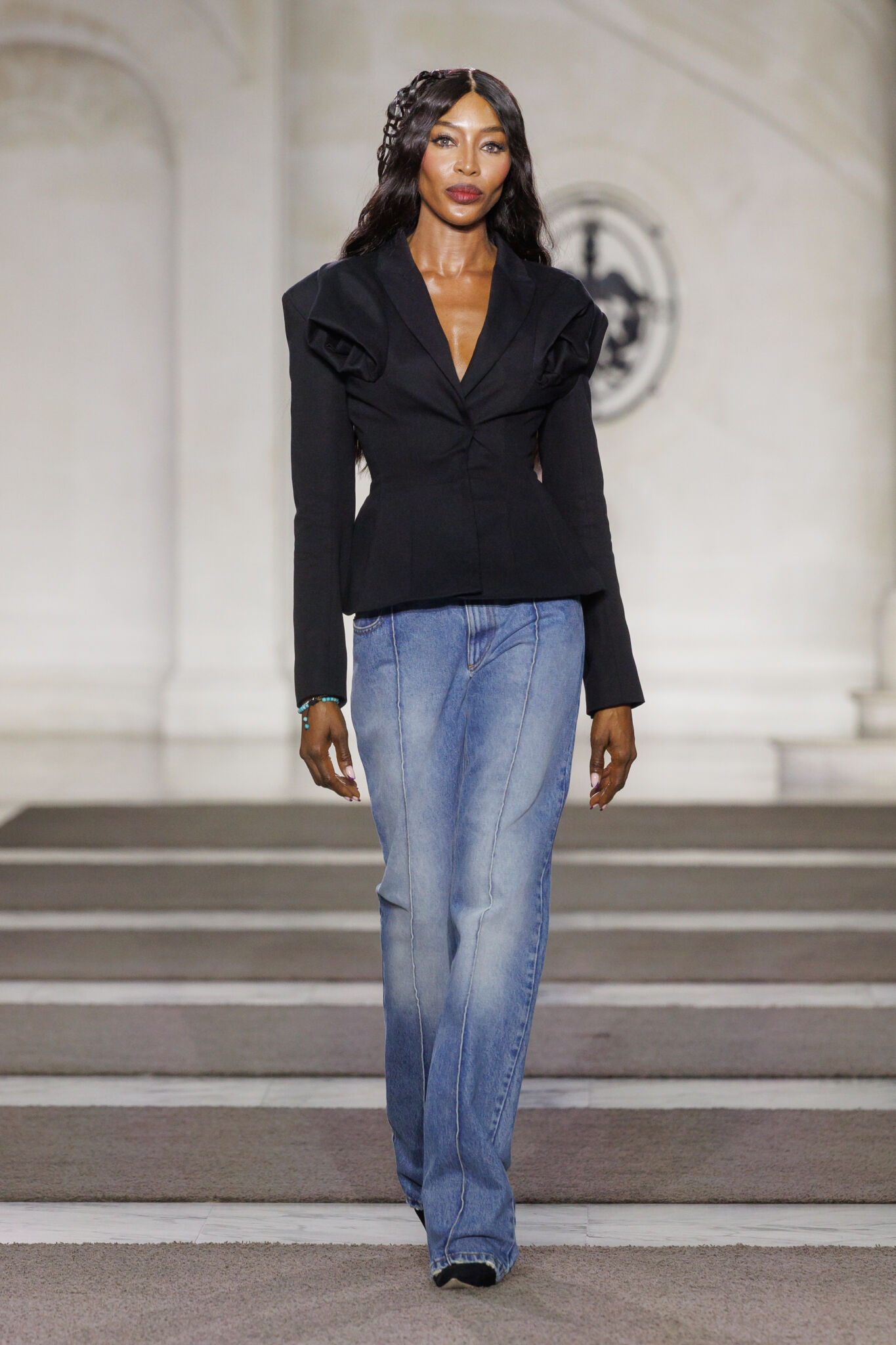
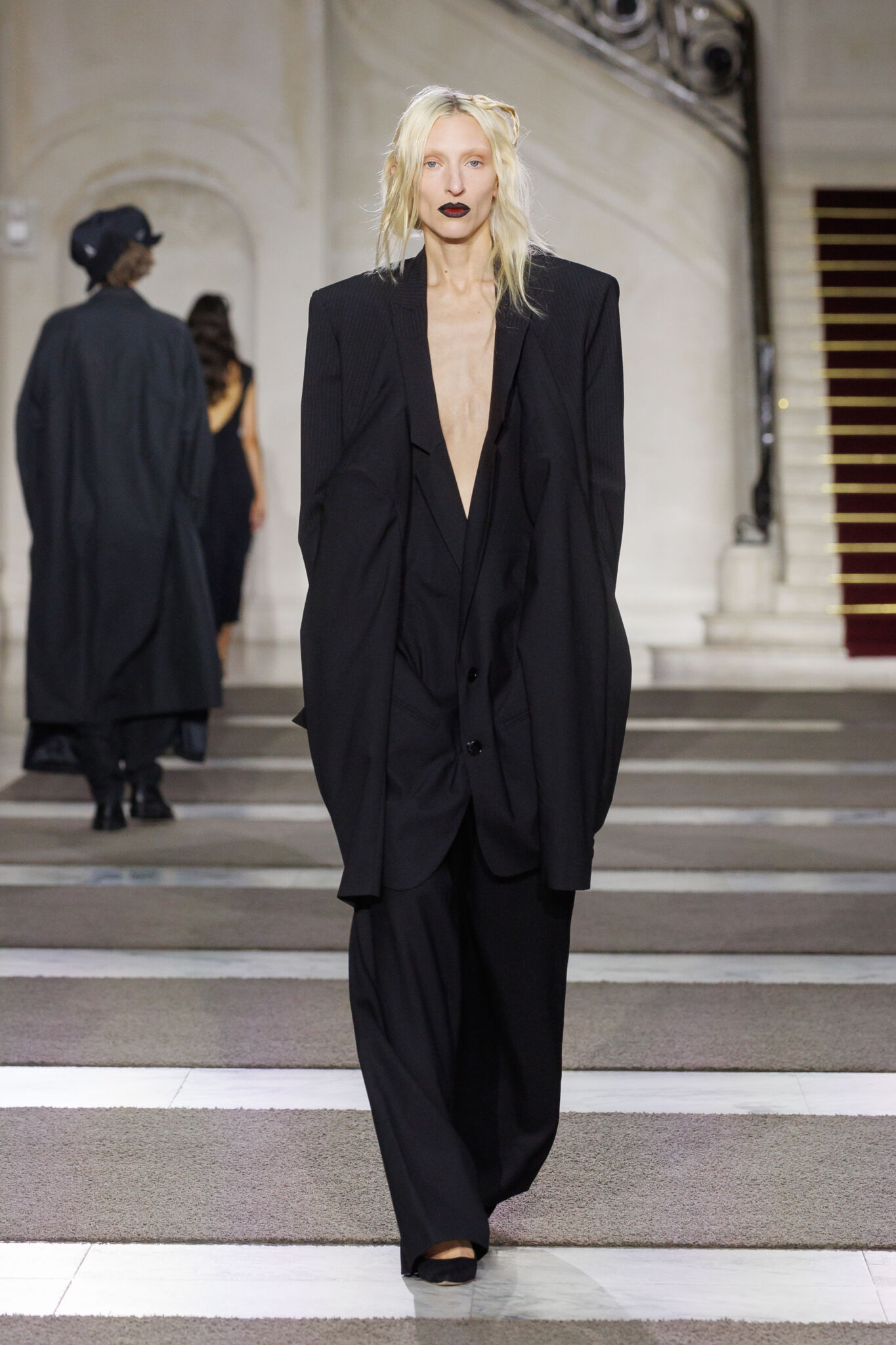
Litkovska
Ukrainian designer Lilia Litkovska brought to Paris her deeply moving reflection “(DIS)CONNECTED” — a meditation on the fragile balance between belonging and detachment, silence and voice. She turned to the aesthetics of art brut — the art of raw emotion beyond academic systems — where sincerity becomes true strength. On the runway, this contradiction came alive: camouflage netting, used to protect Ukrainian soldiers, appeared in pink, transformed into an art installation and a symbol of resilience, courage, and inner resistance. A material meant to conceal now proclaimed freedom — loudly, vulnerably, and without compromise. Litkovska contemplated truth and authenticity, and the inner battles of those who refuse conformity. Soft fabrics, lace, and silk met textured denim and hand-carved wooden accessories turned into jewelry and clothing elements. Deconstructed tailoring — the brand’s signature — appeared in transforming jackets, raw-edged dresses, and unfinished seams. Each garment was mutable, echoing the fluid nature of modern humanity.
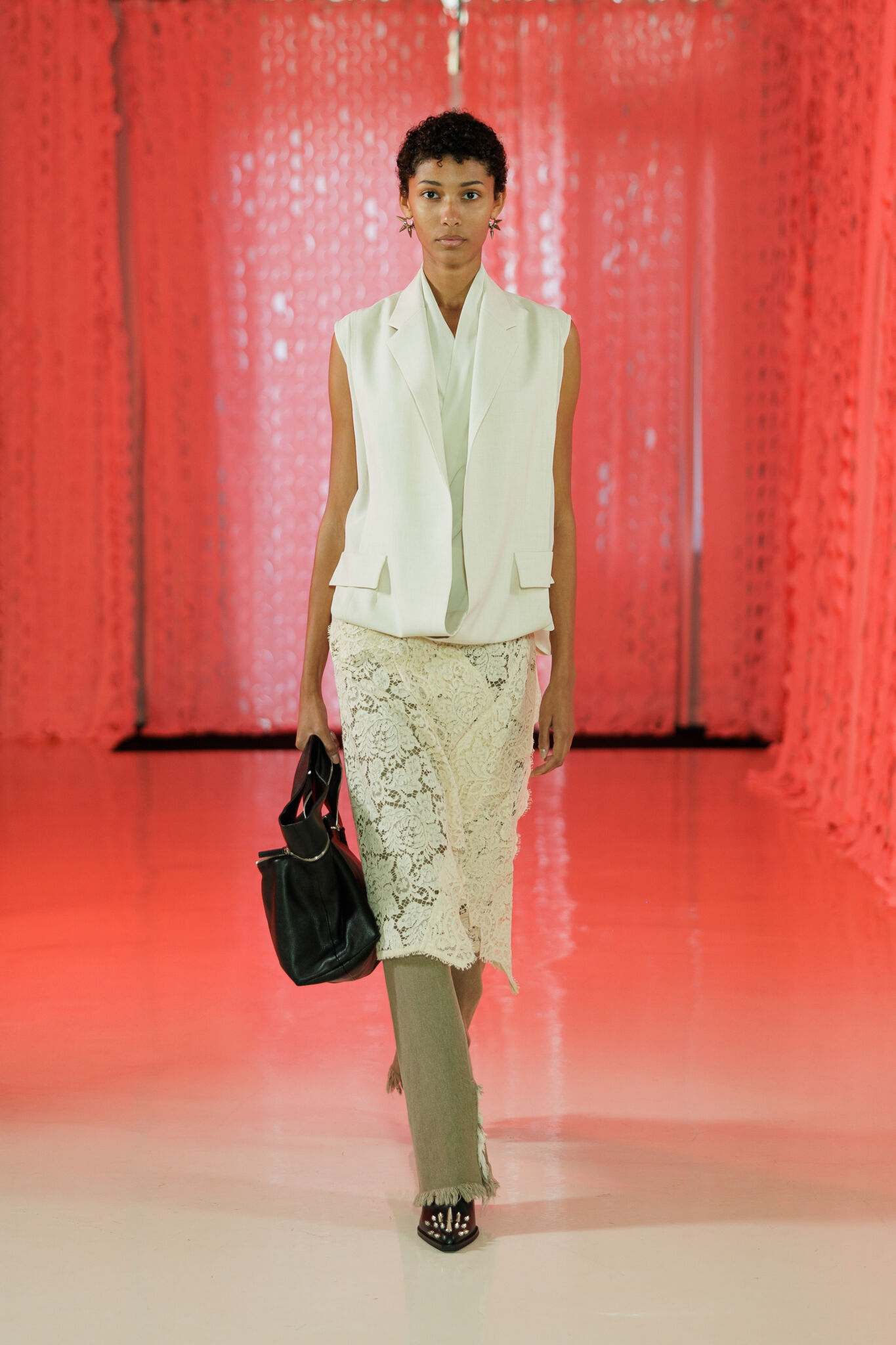
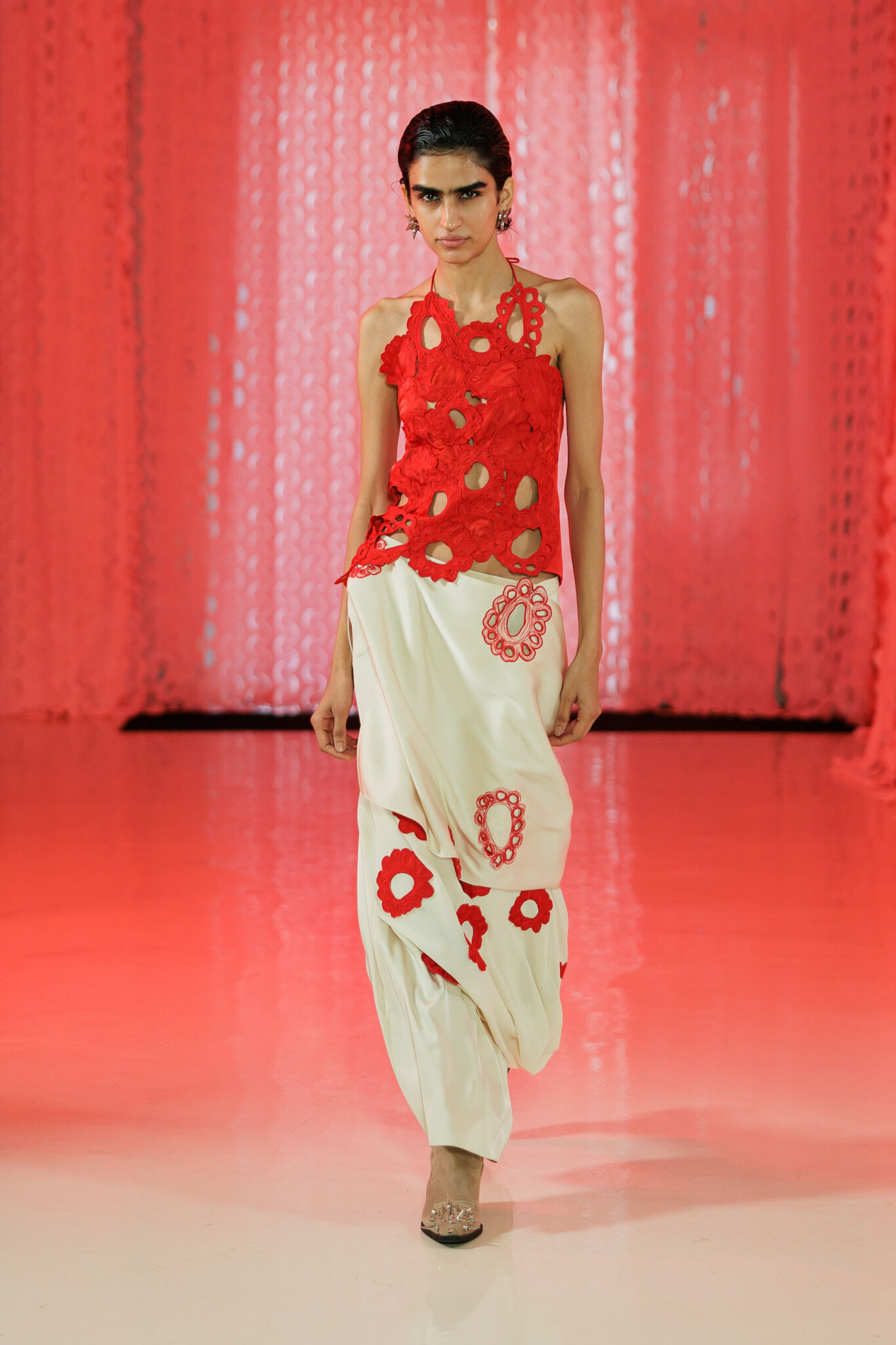
Tom Ford
Haider Ackermann explored the metaphor of dance — where elegance meets the fresh light of morning after a night of passion and glitter. It’s a story of seduction, desire, and the purity of form — a dialogue between heritage and the creative director’s new breath. Tom Ford remains synonymous with allure, and that magnetic spirit endures — enticing yet untouchable. Ackermann turns seduction into the art of nearness: a gaze, a touch, a flicker of light on skin. Lines become architecture; adornment becomes anatomy. Individuality stands at the center, free from gender, defined by clean silhouettes and perfect proportions. The palette exudes joy — luminous pastels, radiant eye accents, and vivid hues reminiscent of awakening after the night. Silver and deep black retain the brand’s signature discipline, a nod to its legacy. The iconic “T” gleamed across heels, belts, and jewelry — a secret code of renewal.
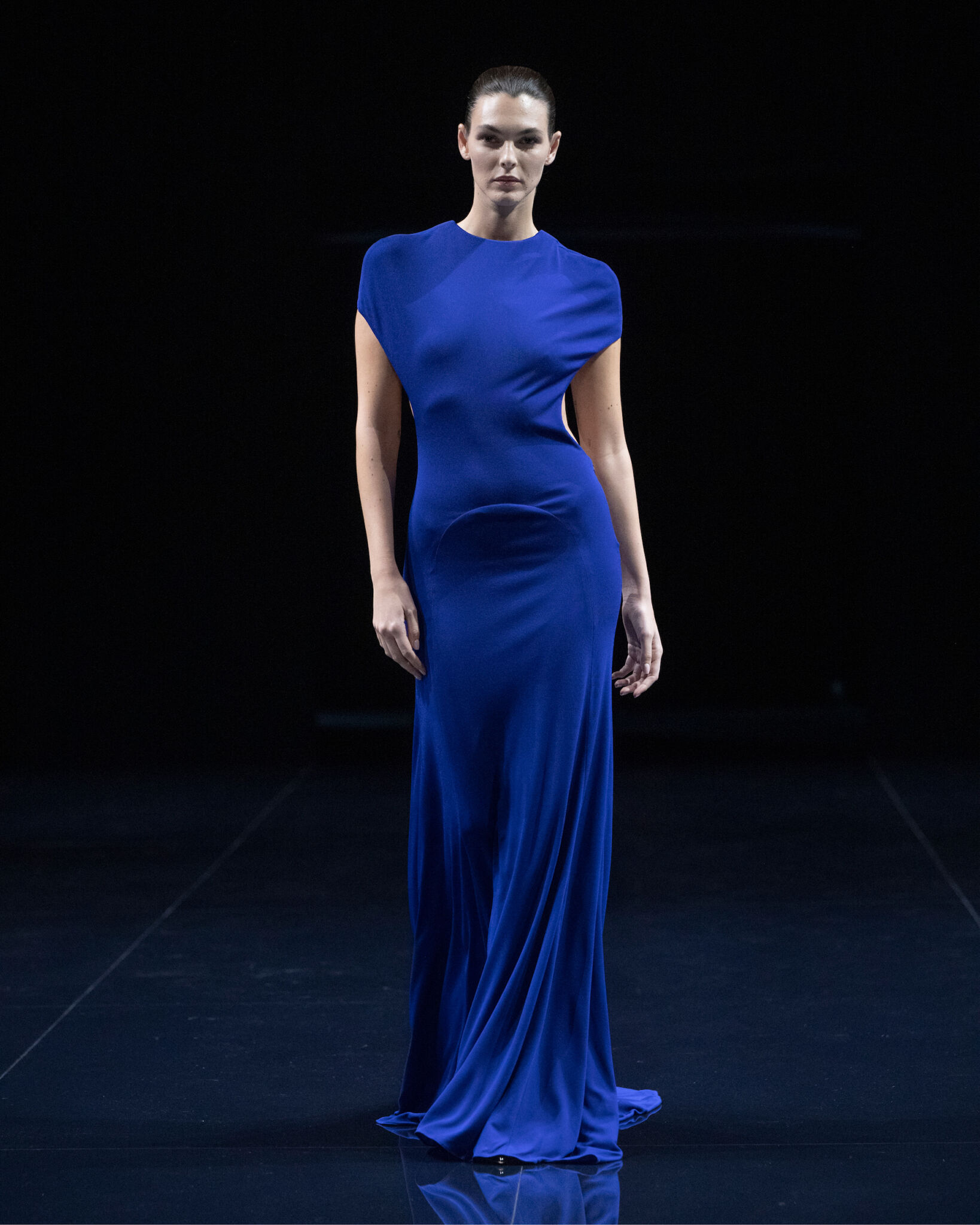
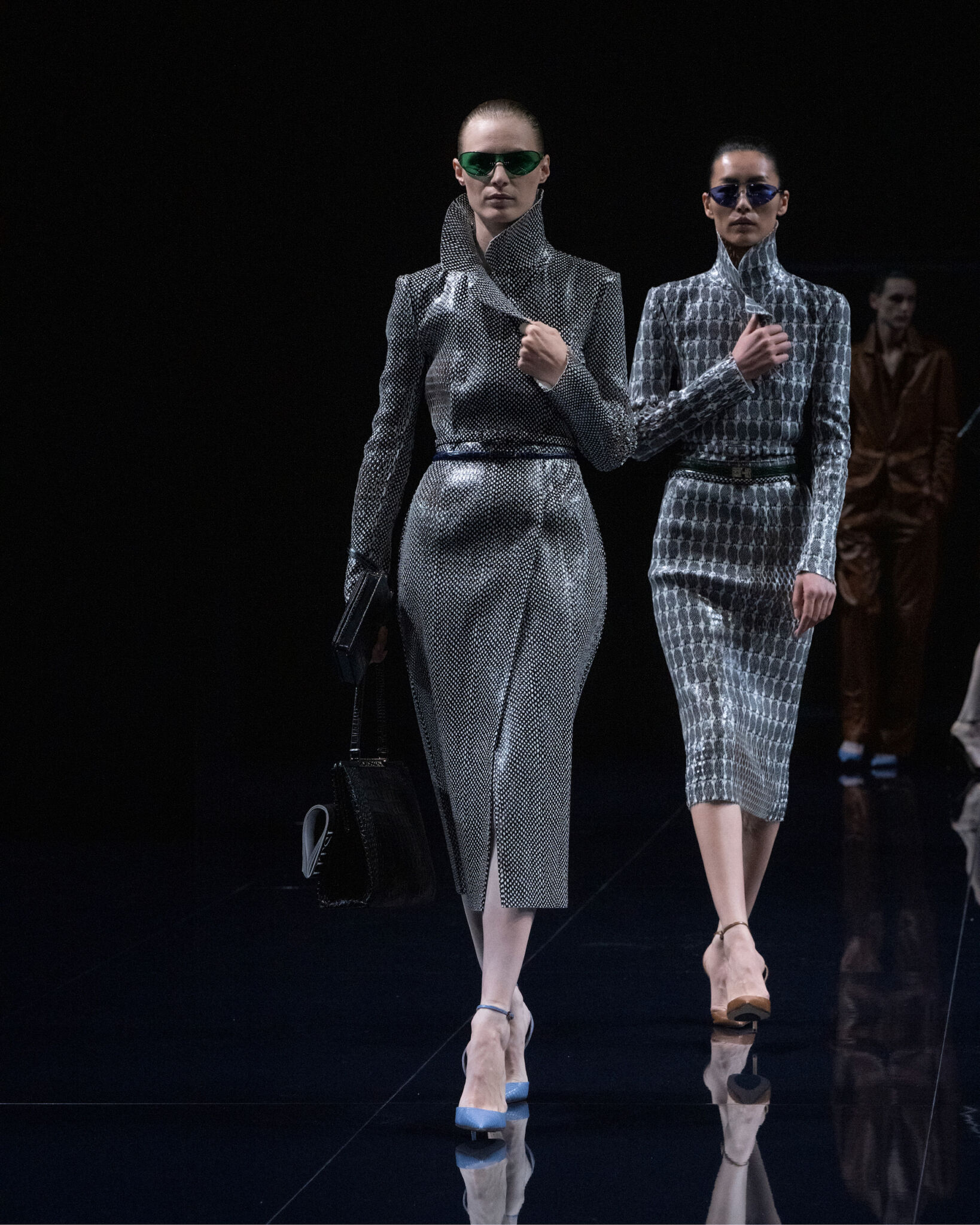
Reverie by Caroline Hú
Caroline Hú redefined beauty’s perspective: at first glance, her creations seem romantic and voluminous, yet beneath the softness lies an intricate play of form and perception. Everywhere — an optical game: dresses with inside-out embroidery, tops turned into linings. She once again proved that the reverse side can be just as beautiful as the front. Focused waists and new tulle techniques gave texture without sacrificing lightness. Digital aesthetics came through — floral prints pixelated into abstraction, and layered fabrics created a 3D-collage effect. Each piece became a living sculpture — from organza gowns with trompe-l’œil bows to black inverted blazers turned into statement adornments. The finale, a collaboration with Adidas Originals, united ballet grace with the dynamism of martial arts.
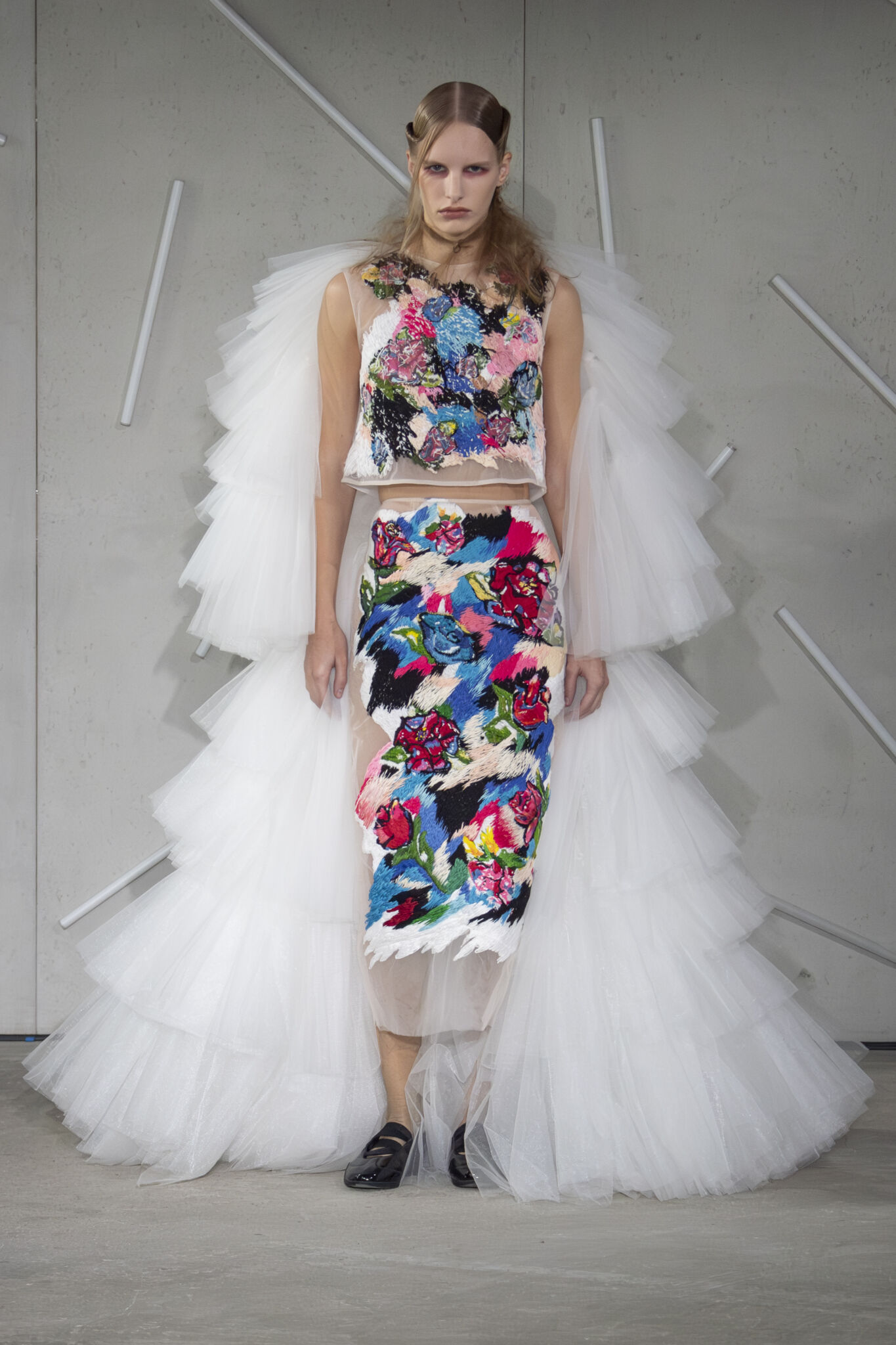
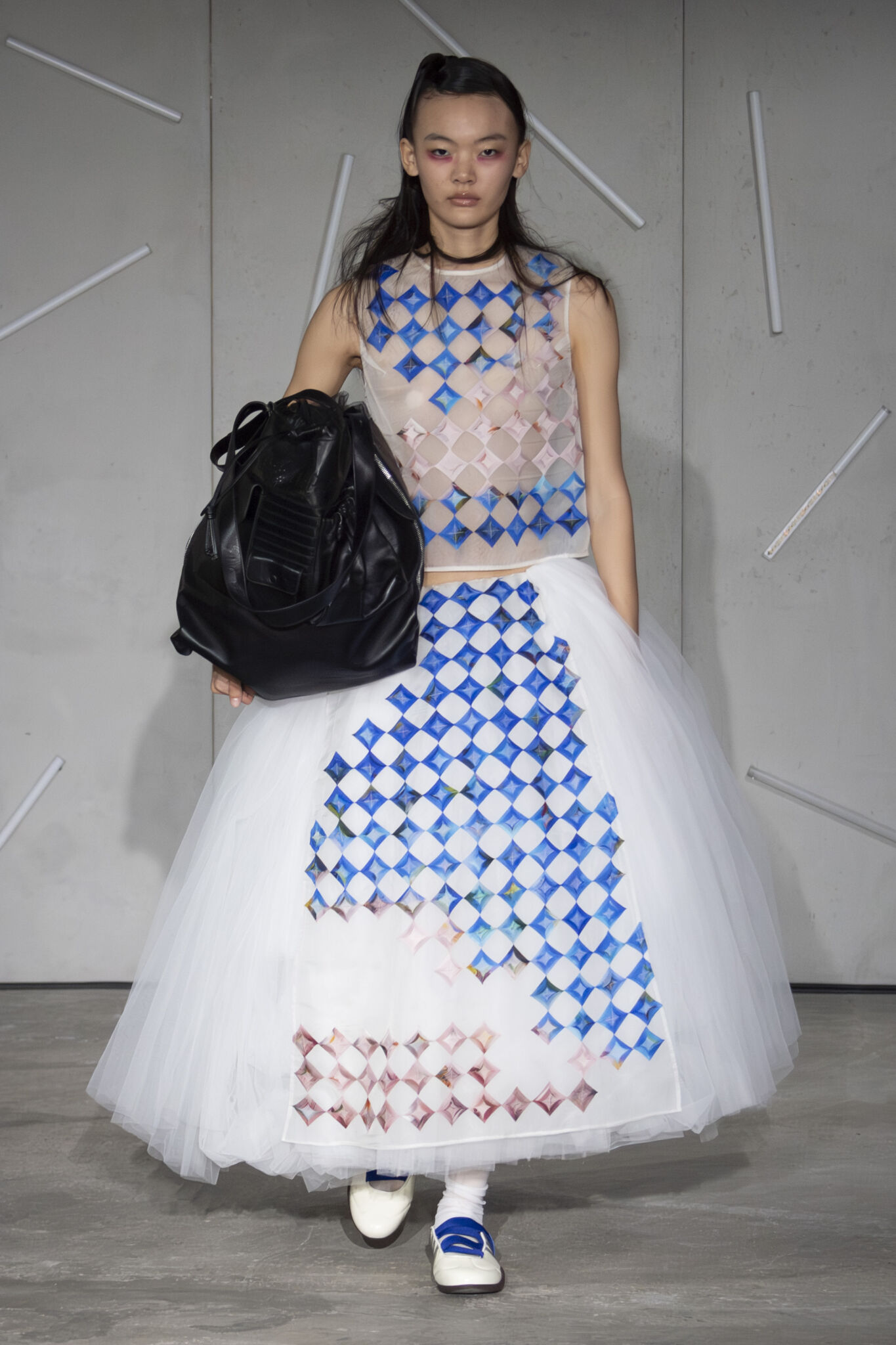
Abra
The new collection celebrated the woman who values comfort, simplicity, and expressiveness in equal measure. The designer set out to define the ideal “essential” wardrobe — transforming the everyday into something refined. Inspired by the archetypes of fashion — the perfect jacket, the flawless dress, the ideal silhouette — Abra elevated simplicity into the highest art form. Proportion, scale, and line were reimagined so that familiar pieces gained new resonance. Production has now shifted entirely to Italy, signaling the brand’s commitment to quality, craftsmanship, and timeless relevance.
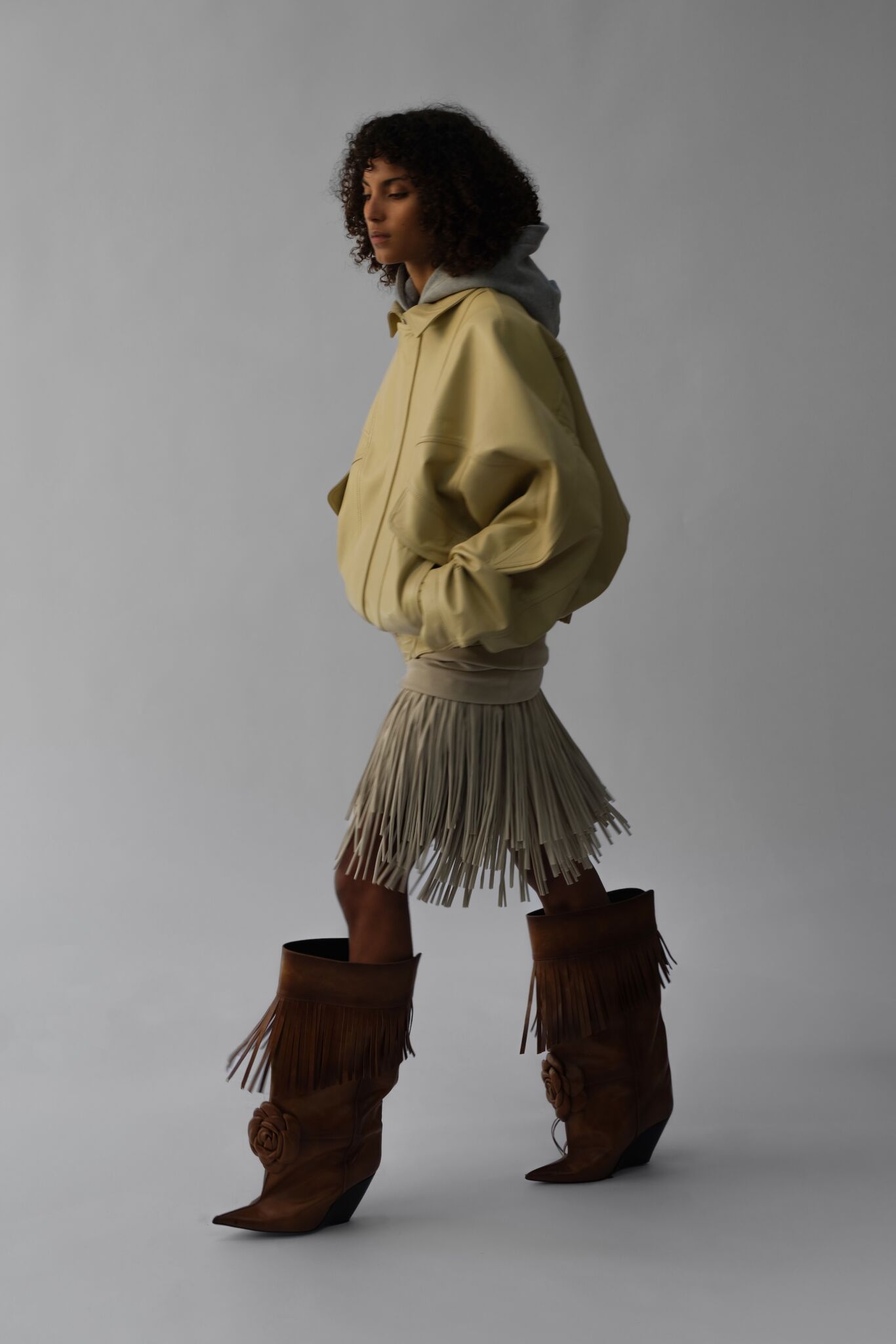
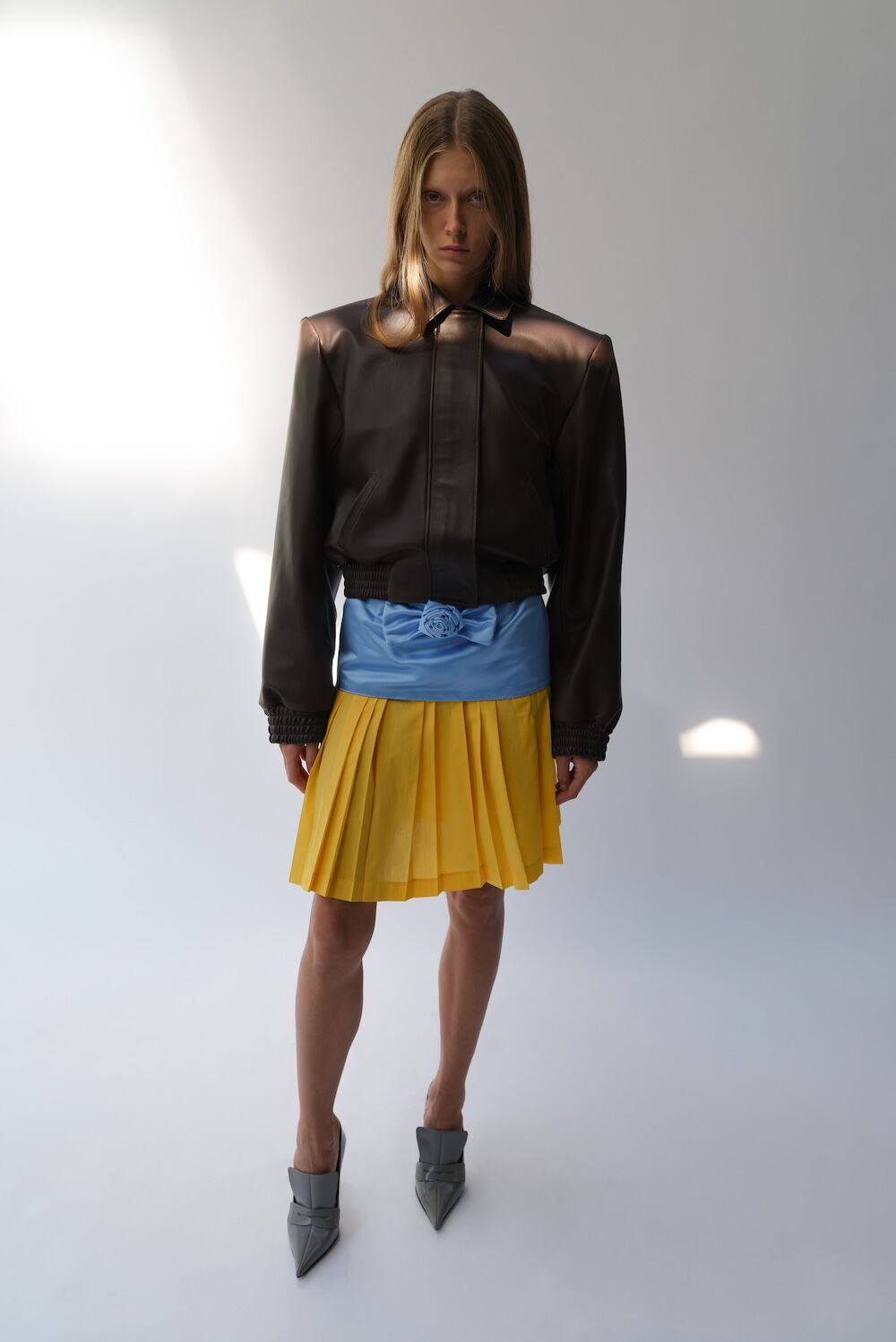
Enfants Riches Déprimés
Military precision met bohemian nonchalance, embodying the brand’s distinctive duality. The collection continued the label’s legacy of rebellious luxury — fusing bohemian ease, punk defiance, and opulent fabrics. Creative director Henri Lévy infused romantic undertones: velvet became the key material, and the palette expanded with deep burgundy and blue. Tailoring from the 1980s was reinterpreted through new silhouettes and fabrics. Women’s looks echoed vintage aesthetics — sheer dresses, Victorian high collars, and delicate florals paired with corsets and archival details. Menswear impressed with structured linen jackets, officer coats, and elegant redingotes. Contrasts — from strict tailoring to “dirty” preppy shirts — created an effortless sense of curated chaos. Wide pleated white trousers, ornate accessories, and glasses gave the looks a balance of aristocratic poise and rebellious freedom.
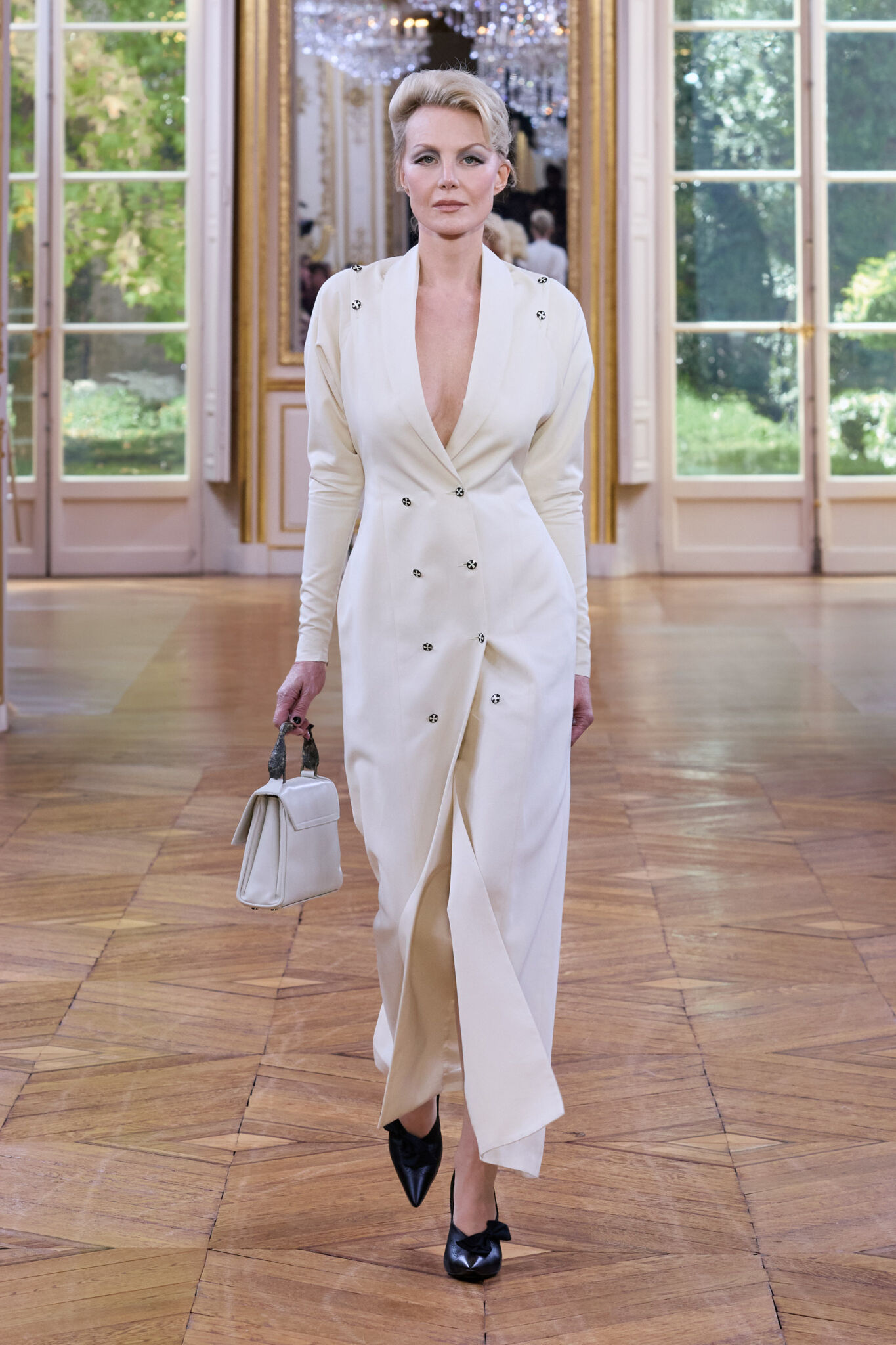
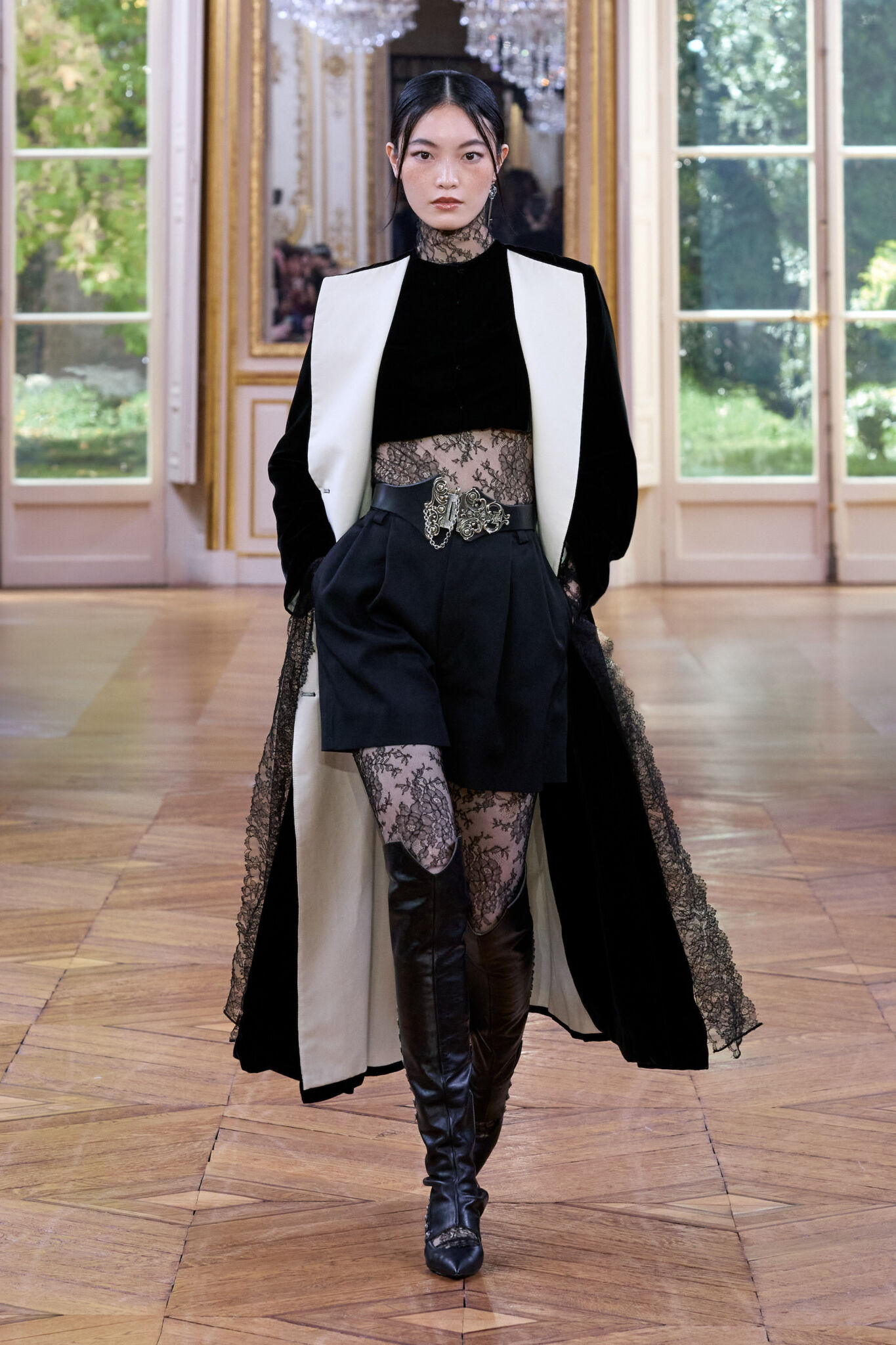
Schiaparelli
Daniel Roseberry captivated audiences once again, proving that today’s fashion seekers crave not spectacle, but emotion and meaning. Fittingly, the show was held at the Centre Pompidou — where modernity meets timeless art. The collection embodied a “dance in the dark” — a state of freedom, sincerity, and inner ecstasy. Schiaparelli has always lived between art and commerce, but its essence lies not in silhouette architecture, rather in cultural dialogue. Sharp-shouldered blazers and precise tailoring paid tribute to discipline and elegant restraint. Sleek column dresses in black, ivory, and carmine embodied the strength of minimalism and confidence. Standout details included trompe-l’œil knitwear inspired by the designer’s own sketches, as well as dresses and suits adorned with playful tassels. Accessories — handbags and shoes — resembled animated sketches, each infused with surrealist spirit and memory, including the house’s iconic Secret bag. Six years into his tenure, Roseberry reaffirmed: the line between prêt-à-porter and couture is an illusion. His vision unites dream and reality, turning everyday life into poetry.
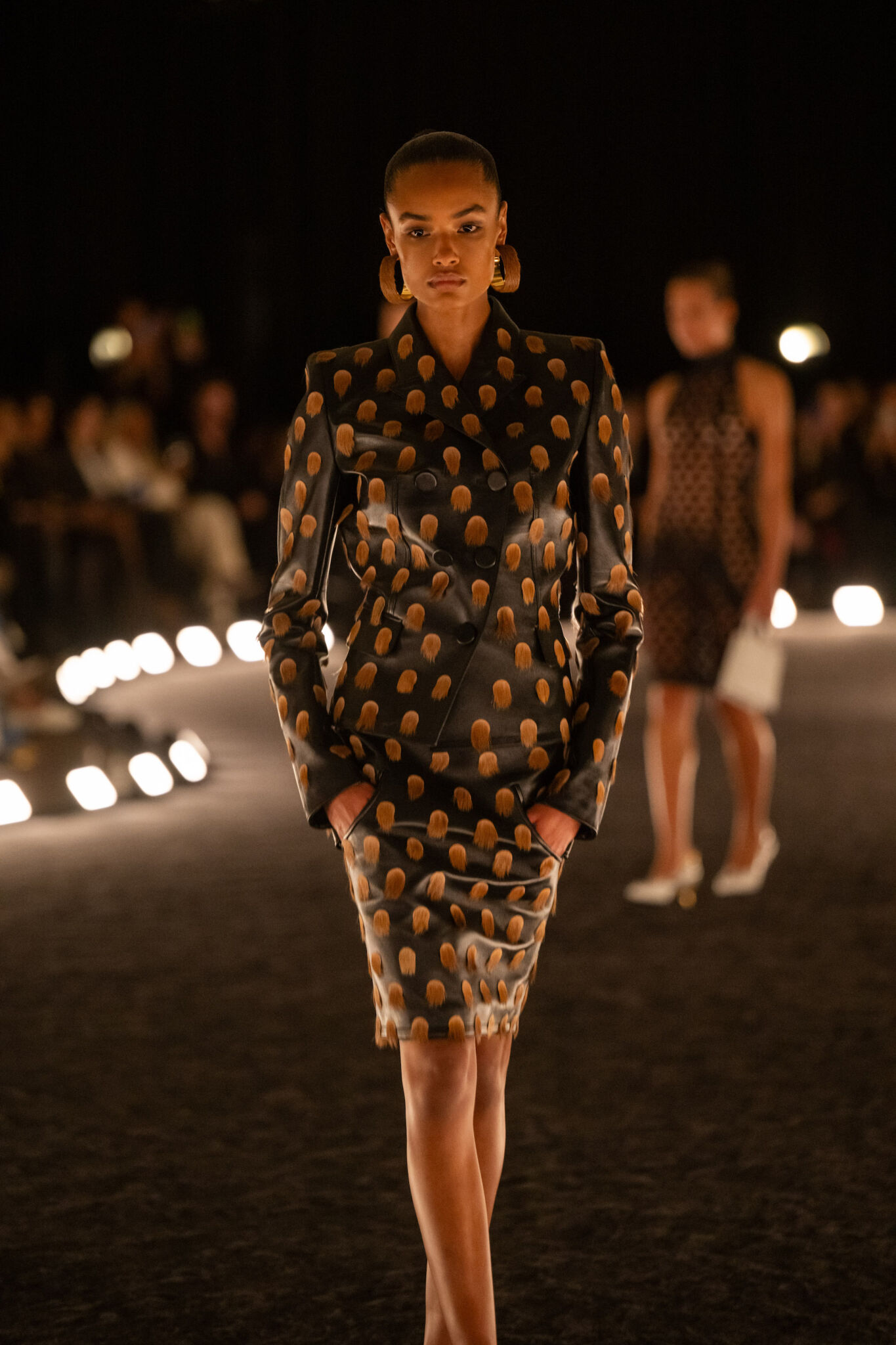
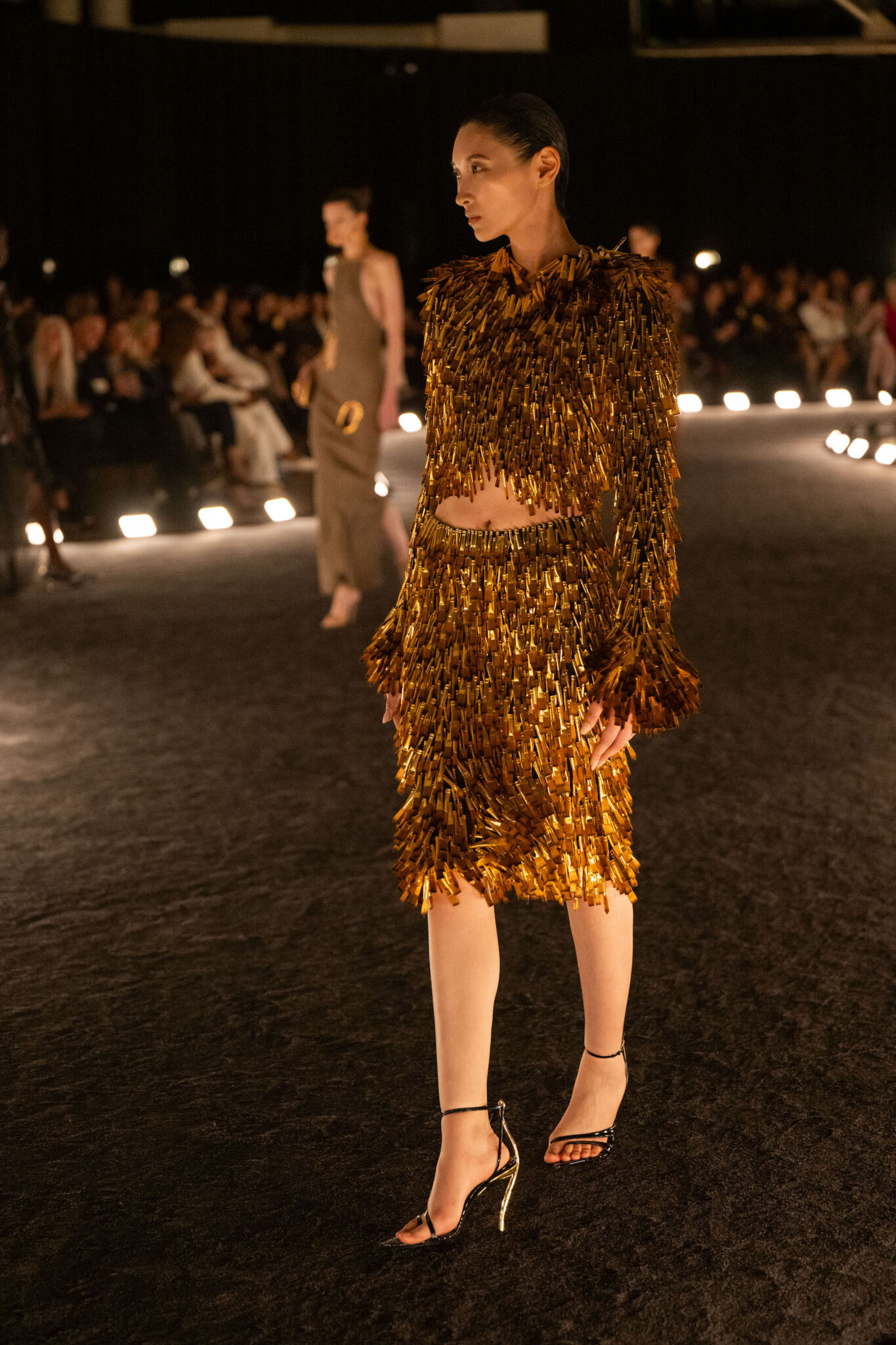
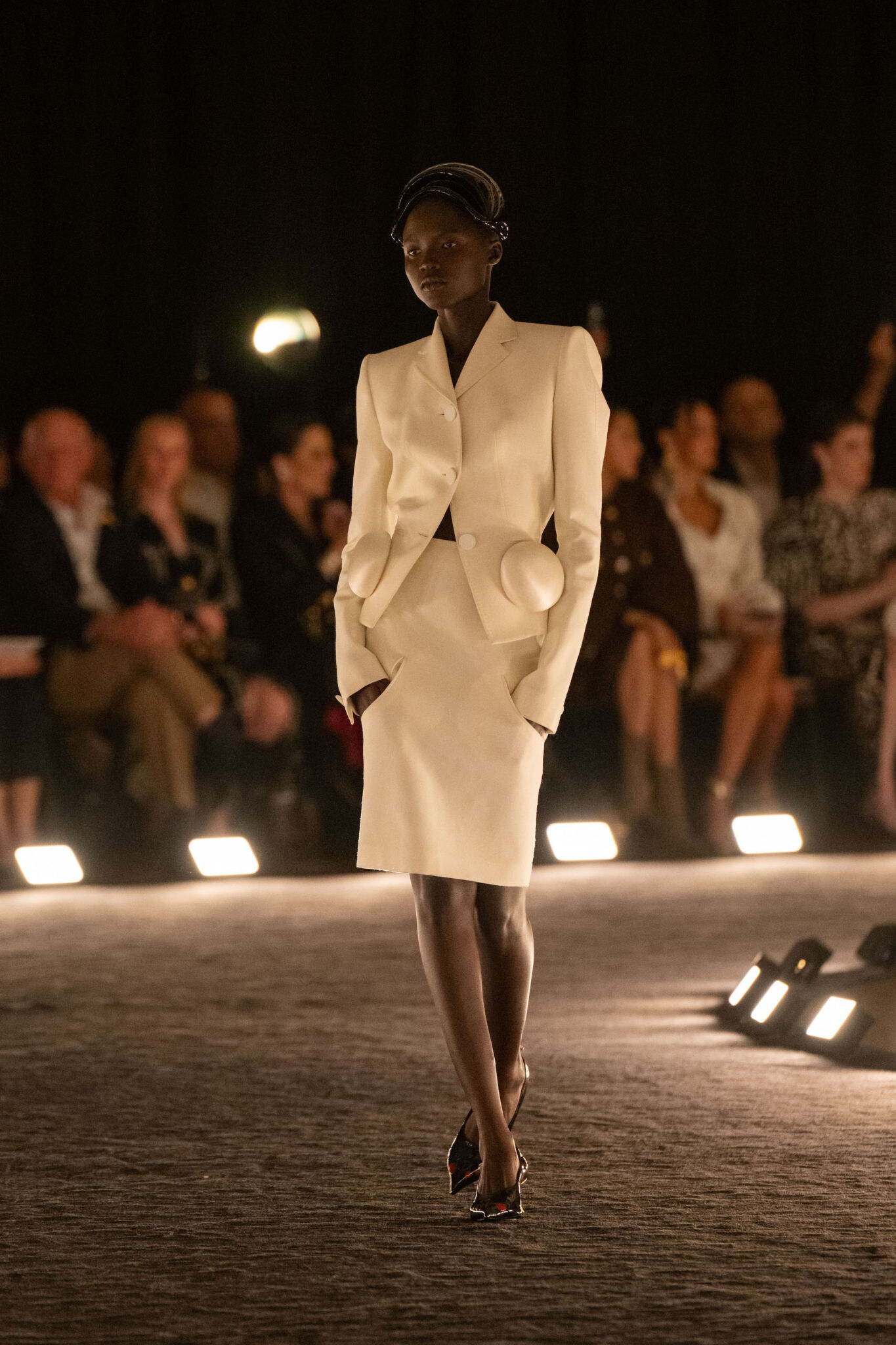
Isabel Marant
Isabel Marant’s collection evoked traces of a traveler’s journey — sun-faded silks, soft knits, and beads shimmering like ancient talismans. Embroidery, beaded fringe, and bark-textured jewelry hinted at the rituals of ancient cultures. Silhouettes were light and fluid — airy lace, knotted waists, asymmetrical ruffles that moved like wind. Cargo pants, weightless jackets with patch pockets, and slouchy bags accompanied sensual draped dresses. Both men’s and women’s looks shared a natural sensuality — open shoulders, suede, and sheer fabrics. The palette mirrored the sun’s path: from sandy and bronze tones to the black and violet of night. Embroidered flowers on denim symbolized life continuing on the move. The finale revealed an “astral camouflage,” dissolving figures into the light of a fading day.
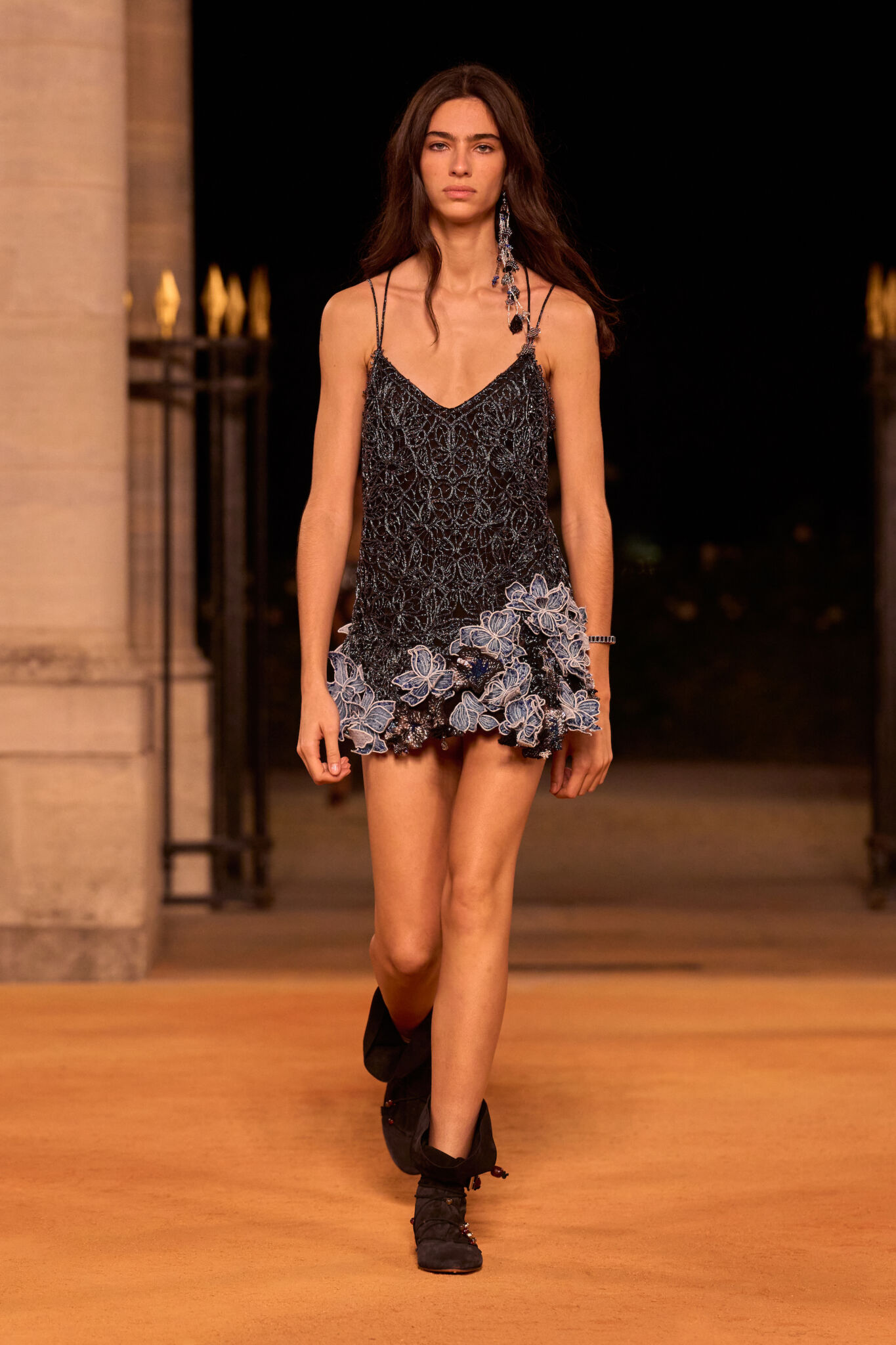
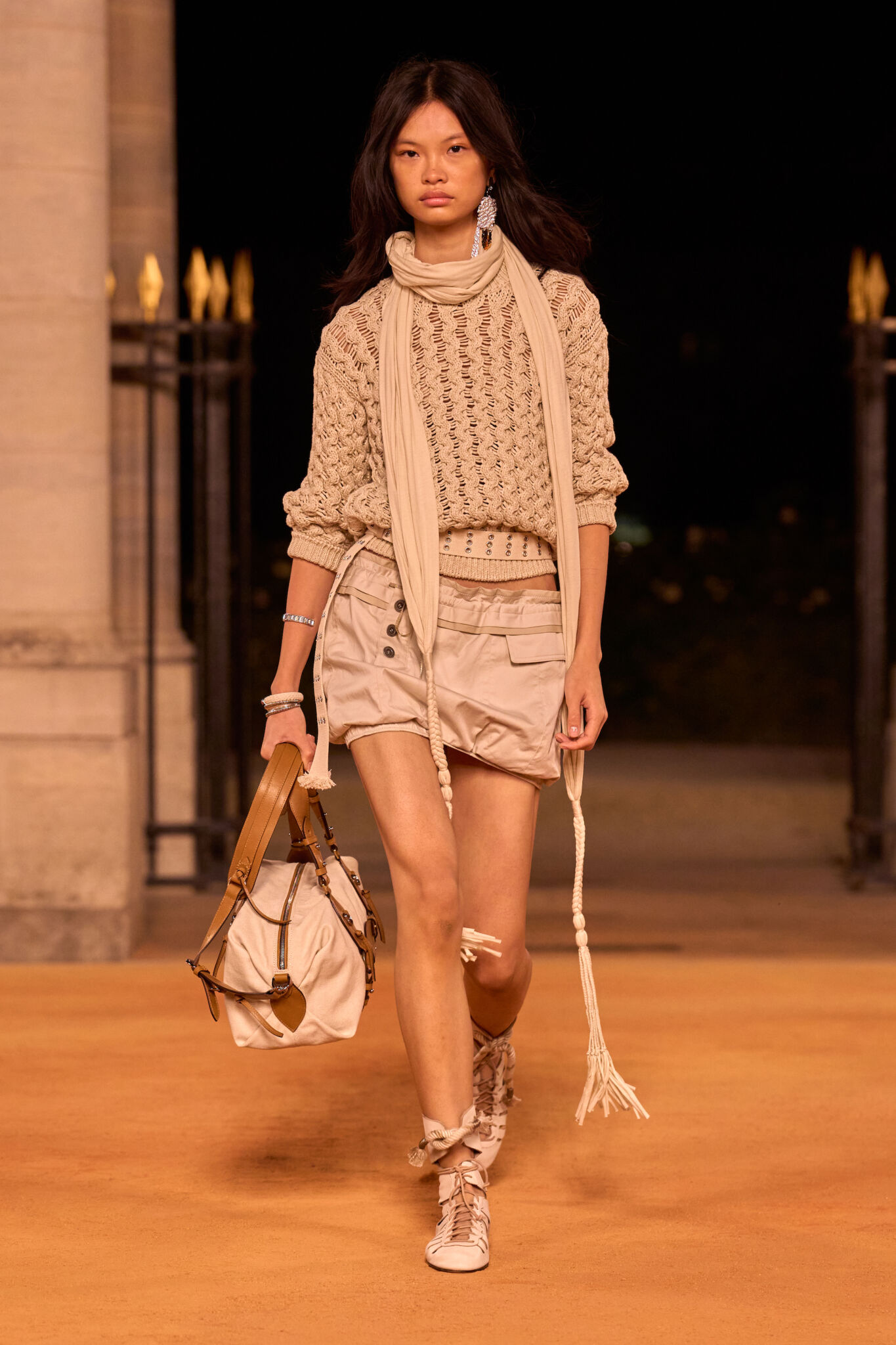
Photographs courtesy of the brands’ PR teams.
